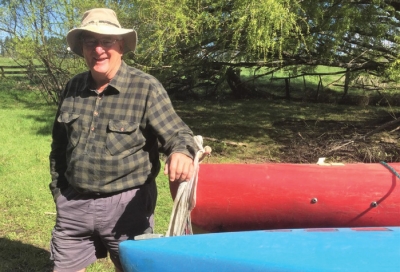Australian wildlife ecologist and bittern expert Matt Herring visited last year and took the time to catch up with his New Zealand counterparts.
“The best thing we can do for nature is simply spend more time in it. From there, reverence grows and action flows.” M Herring, 2013
What a wonderful trip. It was as if we spent a week compiling precious pieces of a rare, incomplete jigsaw puzzle called “Australasian Bittern Ecology and Conservation”.
After several years of being in touch via email and phone, it was so nice to finally get together with the New Zealand bittern crew and see some of their sites first hand.
There is some great work happening across the ditch and a strong sense of being united in working towards reversing the decline of this iconic waterbird that we share. It is affectionately known as matuku hūrepo in Māori, or matuku for short.
The knowledge exchange began with the biennial National Wetland Restoration Symposium in Napier where I was honoured to be a keynote speaker, focusing on the importance of community engagement, novel habitats and active management.
We then had a day visiting wetlands around Hawke’s Bay, including Pekapeka Swamp, followed by a successful bittern workshop day organised by Matt Brady from DOC. It was now crystal clear to me that there’s a lot of love for matuku in New Zealand.
With much discussion about wetland restoration targeting bitterns, it was astounding for many folk to learn about bitterns in rice and how bare, ploughed paddocks ready for sowing are able to support nesting bitterns less than three months later. There was a range of inspiring case studies from around New Zealand at the workshop, and we got to visit some local work in Hawke’s Bay with Hans Rook.
After that, it was time to begin a broader tour of bittern sites across the North Island. First stop was Lake Whatuma, and thanks to John Cheyne and Bernie Kelly, we were able to track some bitterns while kayaking.
We discussed key issues like willow control, raupo (cumbungi) harriers as bittern nest predators.
This wetland has up to nine booming males, but far fewer females, perhaps only three. The apparent shortage of female bitterns across New Zealand is something DOC’s Emma Williams is very concerned about. We may well have the same problem in Australia.
males in rice fields have up to three nesting females in a single territory, there is emerging evidence that would support a general shortage of females here too. It’s definitely something we should consider: a booming male may not be a sufficient indicator of breeding
or site quality.
It was now October and time to visit the 7200-hectare Whangamarino Wetland, between Auckland and Hamilton. This Ramsar site was once the world’s most important wetland for the Australasian bittern, with more than 140 booming males in 1980.
Nowadays, there’s only about a dozen. I learnt about the many issues that are implicated in the decline, such as introduced species and water quality, but I think the huge water level fluctuations are central.
Near Tauranga, we visited the Lower Kaituna Wetland, and were lucky enough to spot a bittern feeding in the eleocharis. Part of the restoration work in the broader area is starting from scratch, essentially constructing new wetlands.
And on the edge of Tauranga itself, right on the coast, we visited a bittern breeding site that was tidal. This was quite perplexing. The vegetation is low and we wondered where they build their nests without being flooded.
Unfledged chicks have been found in land nearby, including a recreational park. We talked about how this site would be suitable for a thermal drone in locating nests and monitoring breeding success.
All in all, a wonderful trip, with special thanks to all who made it possible. I’m looking forward to returning the favour!
The love for matuku in New Zealand is admirable, and the conservation work being done is inspiring
